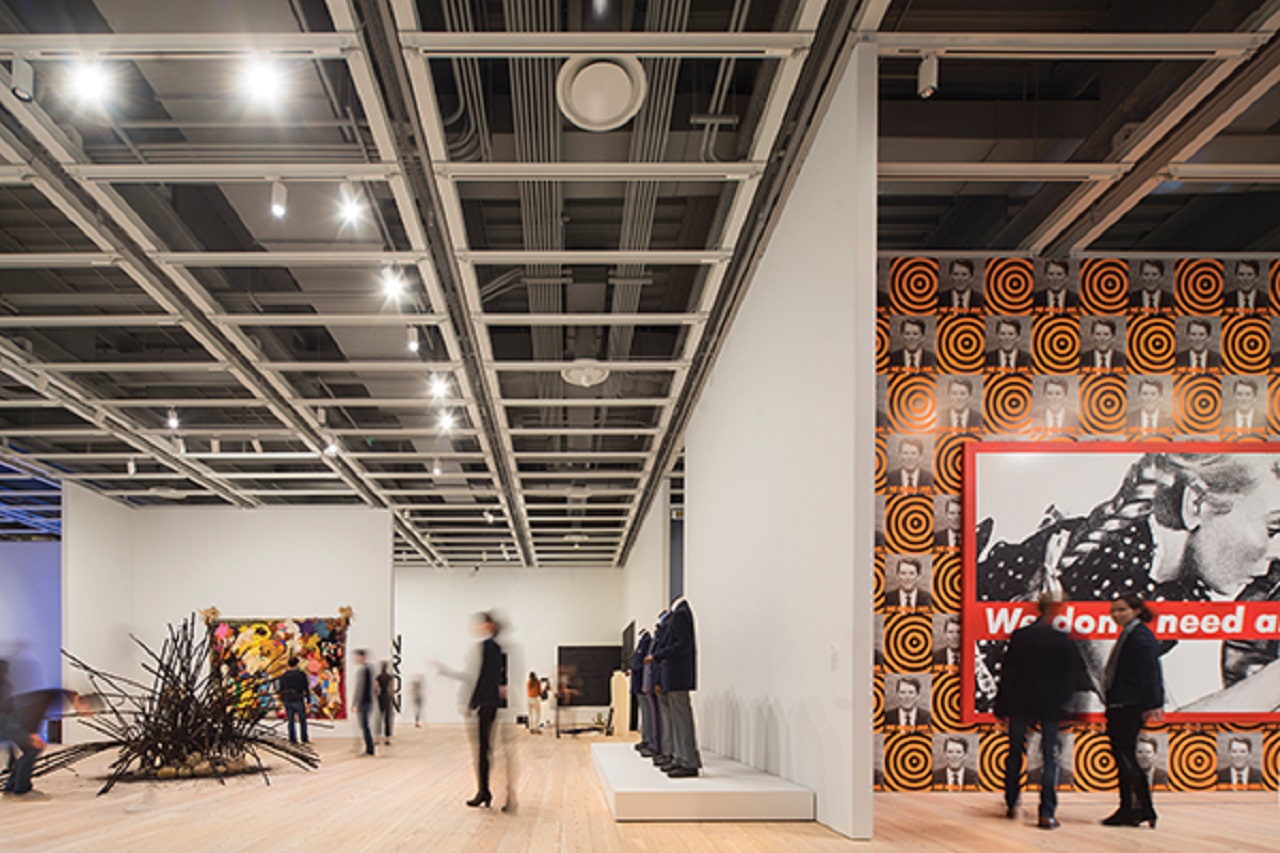The Whitney Is Wired For Sound, Video
State-of-the-art electronic and audiovisual components create a multimedia experience at this stunning art museum in New York. Yes, the Whitney is wired for sound, video.
Author:George EvansFeb 22, 202434.1K Shares494.9K Views
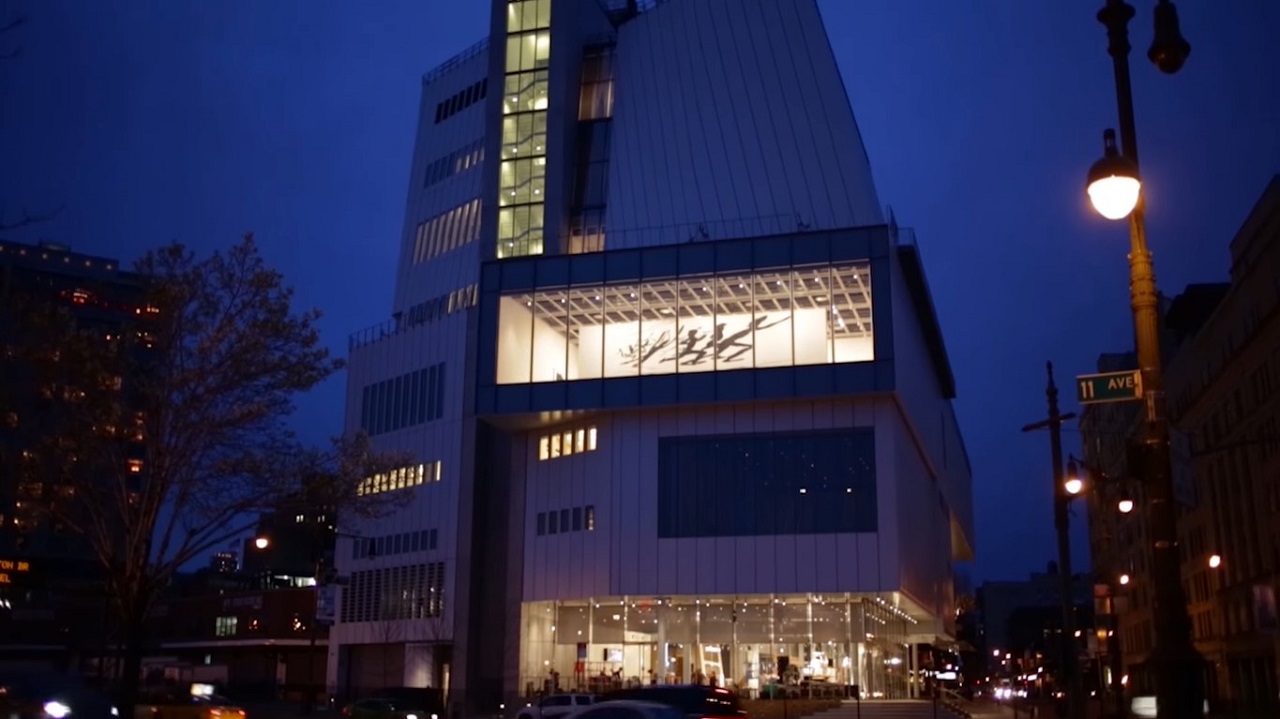
As the Whitney is wired for sound, video, expect a more profound museum experience.
The new Whitney Museum of American Art near New York City’s High Line is a masterpiece of architecture. But what’s behind the walls is just as notable: state-of-the-art custom electronics, and audiovisual and I.T. installations that create a seamless multimedia experience for patrons.
The Whitney’s new building is designed by architect Renzo Piano and situated near the Hudson River.
Museum officials said:
“„[It] vastly increases the museum’s exhibition and programming space, offering the most expansive display ever of its unsurpassed collection of modern and contemporary American art.- unnamed officials of Whitney Museum of American Art
Opened in early 2015, the building gives the Whitney a total of 50,000 sq. ft. of gallery space and 13,000 sq. ft. of outdoor space facing the High Line for installations, performances, and events.
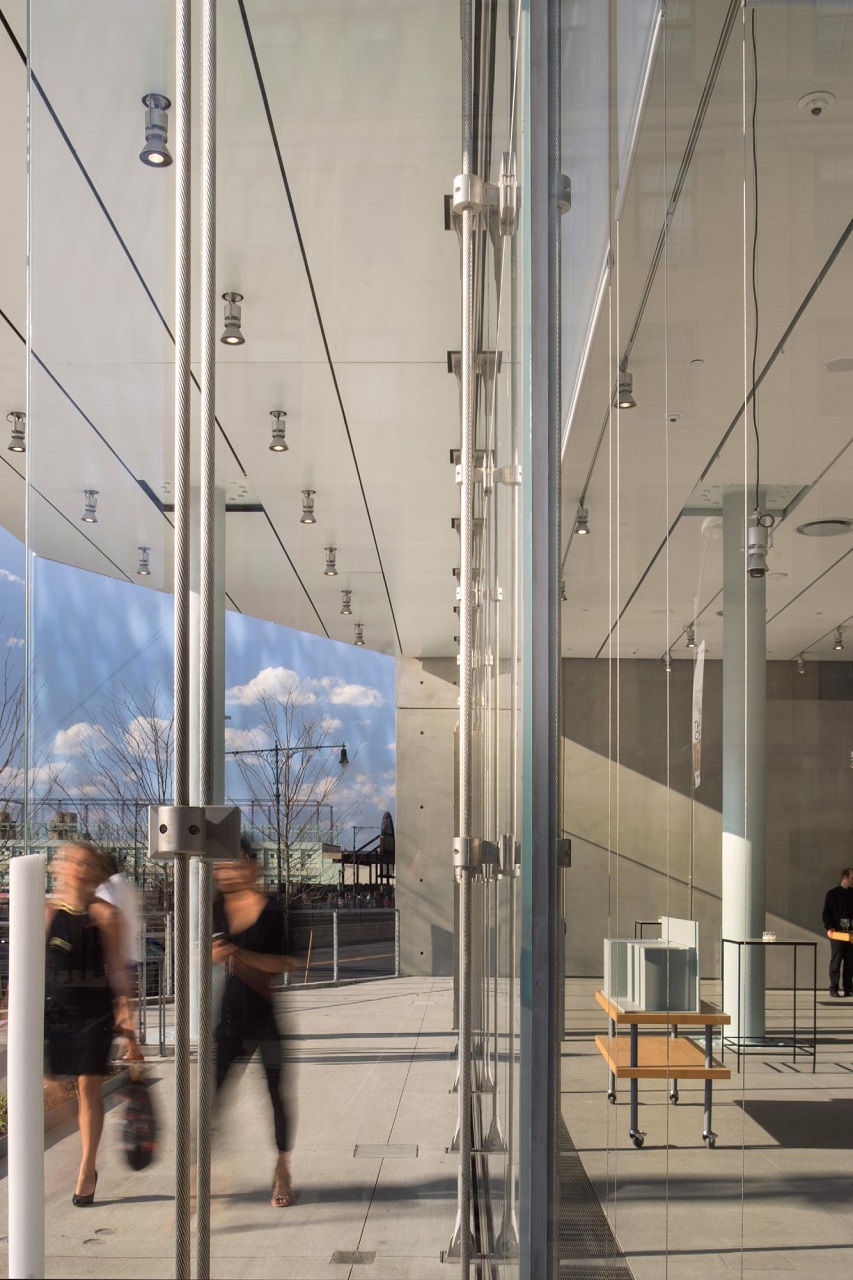
In The Hands Of Audio-Visual Experts
Cerami & Associates, a New York-based consultancy in acoustical, audiovisual, IT, and security design, designed the systems for new theaters and interactive audiovisual systems throughout the museum.
Gardiner & Theobald in New York, the owner’s representatives for the museum, selected Cerami & Associates for the project, based on the consultant’s strong history with the Whitney, having worked on renovations and exhibits in the museum’s prior location.
Cerami & Associates’ representatives worked closely with the project team to understand the design brief and concepts for the museum.
They interviewed key stakeholders and user groups to determine the needs and requirements for each space.
The firm also provided extensive digital signage and an assistive-listening device system in the galleries, all completed over a 16-month span.
Works And Other Improvements Done
The new technical spaces include:
- an education center
- a multi-use black box theater for film, video, and performance
- a 170-seat theater with views to the river
- a conservation lab
- a library reading room
Cerami planners tailored the acoustical design of each space to support the exhibits, events, and special functions held at the Whitney.
Special control using an acoustically isolated design ensures that all of the varied functions in the galleries are clear and comfortable for patrons and visitors, particularly in the theater, where control of the West Side Highway traffic noise outdoors was critical.
Because the main focus of the museum is film, the Cerami firm designed AV systems for state-of-the-art film processing and surround-sound audio support, as well as the capacity to support any live theatrical event or function.
The main performance venue, the black box theater, and a nearby film and video gallery are designed to provide 16-mm and 32-mm film projection.
Also developed were AV solutions for the museum’s classrooms and seminar rooms.
The AV technology includes a building-wide, distributed-digital audio system delivering multi-channel sound to specific locations, such as:
- galleries
- lobbies
- restaurant/cafés
Broadcast tie lines terminate at the loading dock from strategically placed connections for production and satellite camera feeds.
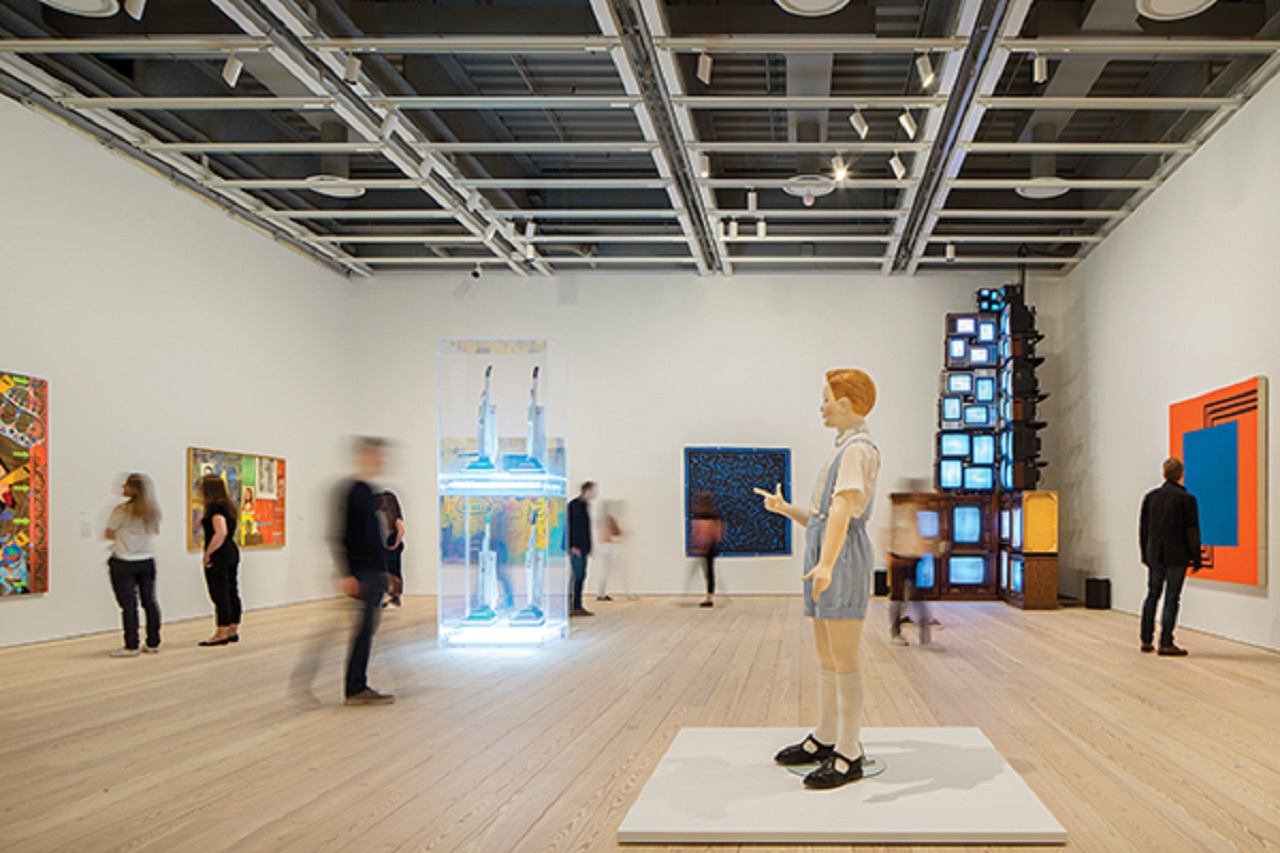
The black box theater is one example of the multiple functions requiring multiple audiovisual components.
The theater provides a flexible space for multiple uses, including:
- multimedia presentations, employing digital cinema-quality projection
- motion-picture film with cinema-quality sound, surround sound
- lectures, spoken-word presentations, panel discussions
- performances, such as dance, with recorded or live music accompaniment
- screening of new video artwork in various formats
Likewise, the restaurant/cafés are equipped with audiovisual fit-out to accommodate events requiring sound reinforcement and video projection.
It includes:
- two motorized ceiling-recessed front-projection screens for use with portable video projection from within the space
- two floor boxes located approximately where projectors would be located to properly fill and illuminate the screens (connectivity from playback facilities in the theater and from the lectern floor boxes is provided)
- two floor boxes located approximately where a lectern might be placed for a presentation, or narration of projected images (connectivity for microphones and connectivity to the projector locations for projection of laptop output is provided)
- a system of ceiling-recessed loudspeakers
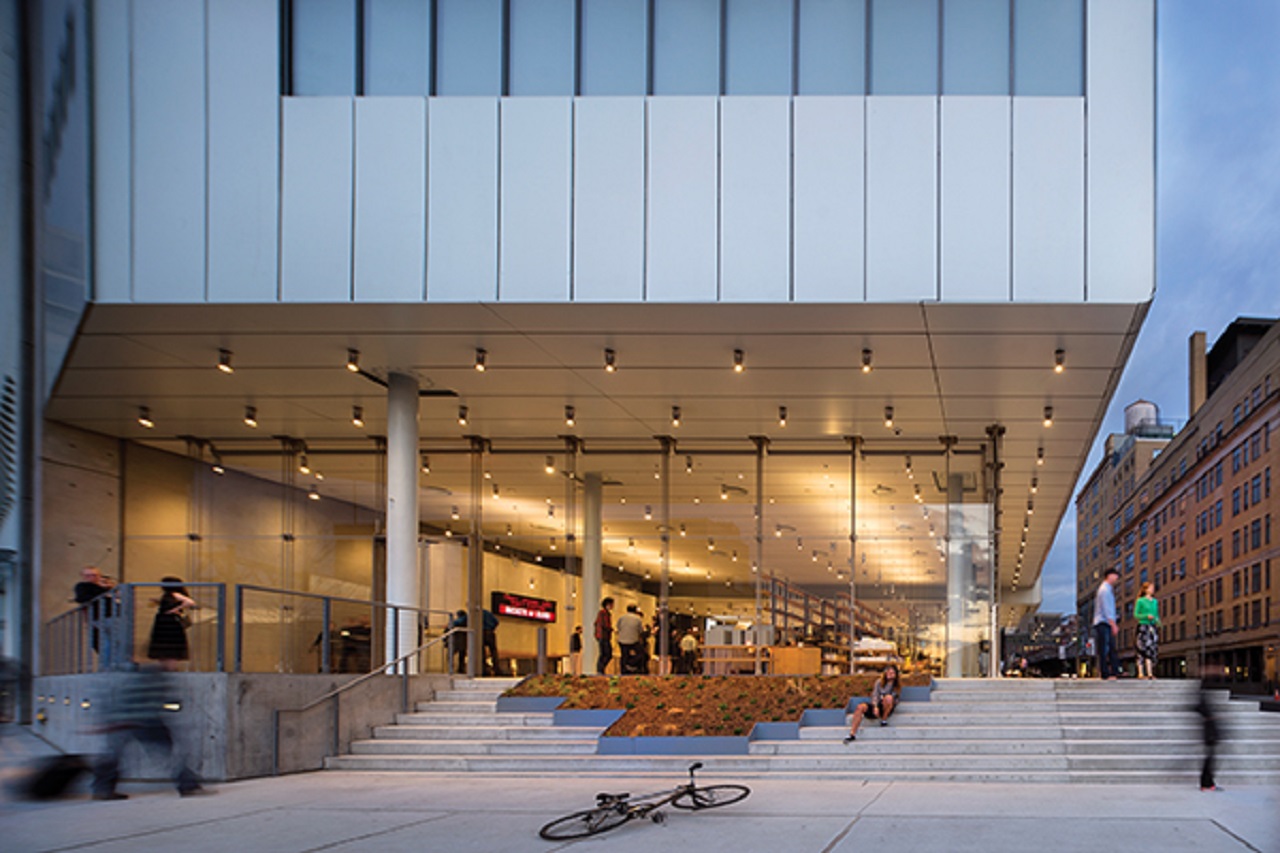
Conclusion
Similar attention to audiovisual needs is seen in the museum’s:
- classrooms
- seminar rooms
- film and video galleries
- the trustee conference room
As a result, the Whitney’s new home truly engages patrons on many levels.
In addition, now that the Whitney is wired for sound, video, it offers a more notable experience.

George Evans
Author
George Anderson, an exceptional architectural designer, envisions and brings to life structures that transcend the realm of imagination. With an unwavering passion for design and an innate eye for detail, George seamlessly blends form and function, creating immersive spaces that inspire awe.
Driven by a deep appreciation for the interplay of space, light, and materials, George's innovative approach redefines the possibilities of architectural design. His visionary compositions leave an indelible mark, evoking a sense of wonder and transforming the built environment.
George Anderson's transformative designs and unwavering dedication continue to shape the architectural landscape, pushing the boundaries of what is possible and inspiring generations to come.
Latest Articles
Popular Articles
